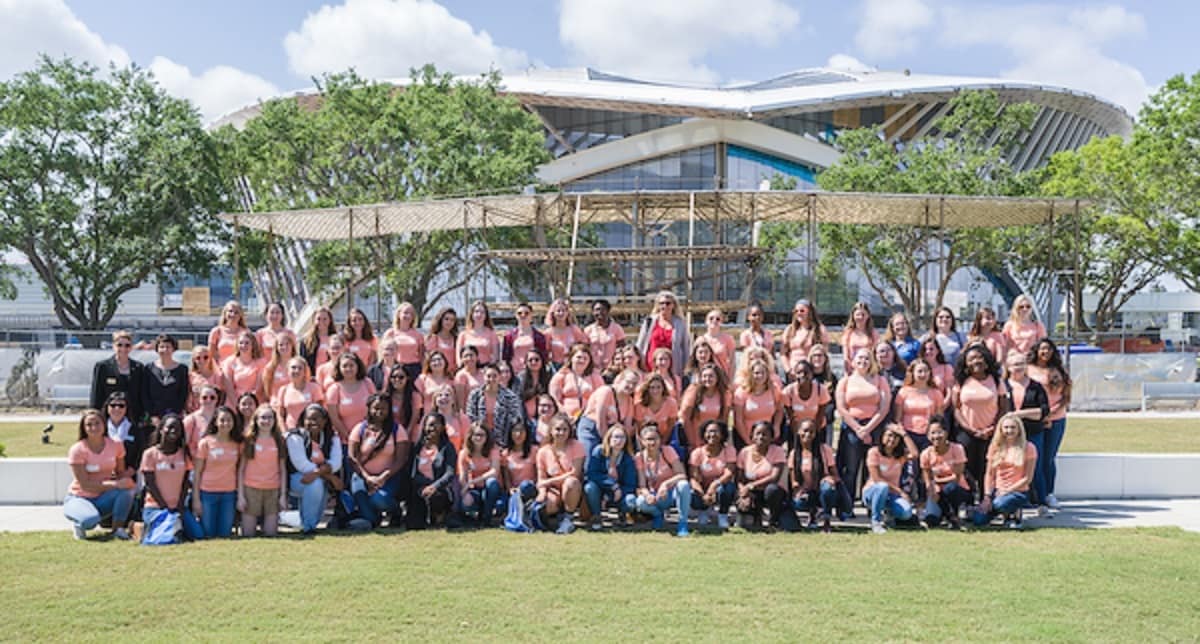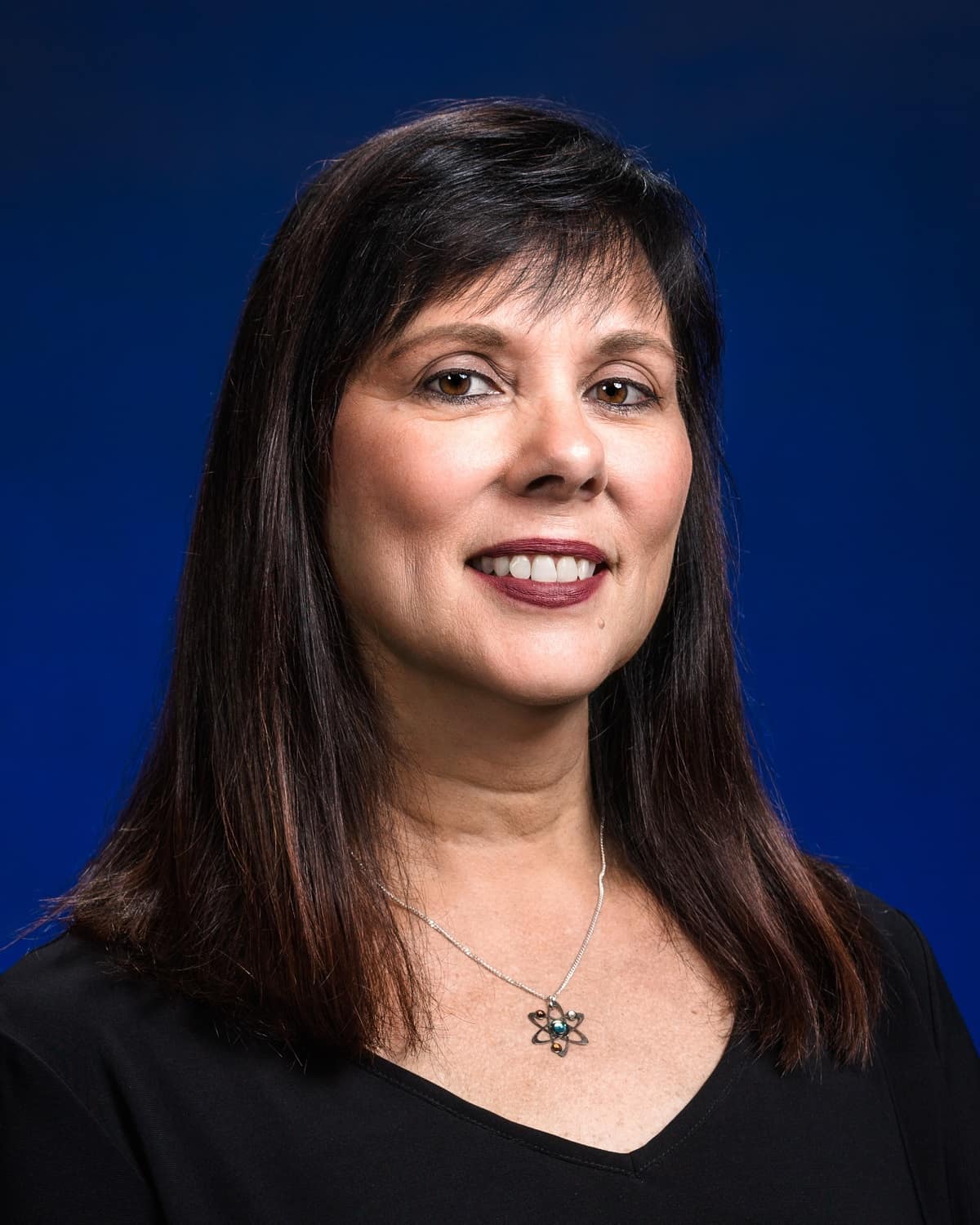Women in Science Group Welcomes Area High-School Students

Chemical engineer Dr. Audrey Butler, who joined the Embry-Riddle community last year when her husband Dr. P. Barry Butler became the university’s sixth president, shared some advice with aspiring female scientists and engineers on March 27.
“Encourage each other,” she told high-school students who were visiting Embry-Riddle’s Daytona Beach, Fla., campus. “Support each other. Appreciate each other. You are going to be changing the world together, and it’s going to be much easier if you do that as friends and collaborators.”
Her remarks were offered as part of an event hosted by Women in Science Embry-Riddle (WiSER).
“A Journey to Our Star”
The program’s theme, “A Journey to Our Star,” honored keynote speaker Dr. Nicola Fox of Johns Hopkins University and NASA. Female students taking sophomore- and junior-level mathematics and science classes at area high schools wore orange “Girls Just Wanna Have Sun” T-shirts to the event.
Dr. Fox serves as project scientist for the Parker Solar Probe mission, set to launch between July 31 and August 19, 2018. A Delta IV-Heavy launch vehicle will make the night launch from the Kennedy Space Center.
Dr. Butler expanded on the program’s Sun theme by explaining how thinking analytically is a life skill that opens up career choices in science, engineering and beyond.
Scientific work can be highly collaborative, she emphasized, and young women interested in science can find clues to a field they will enjoy by looking at their strengths and passions. Someone who likes to solve puzzles might eventually work in big data, for example. A gamer might have the hand-eye coordination and processing skills to make a great pilot.
In her keynote address, Dr. Fox described her “best job in the world” managing a science, engineering and technology team on a seven-year mission to “touch the Sun.” The Parker Solar Probe will take us closer to the planet’s surface than any spacecraft before it, withstanding brutal heat and radiation, she noted. Its goal is to reveal the mysteries of the corona, such as why temperatures rise farther from the surface, and how solar winds continually accelerate.
Throughout her talk, she shared videos of 13 women from the Johns Hopkins Applied Physics Lab. Each lead engineer or analyst briefly described her education, role on the mission and excitement about sending a small, light, autonomous but very powerful probe into a 3 million-degree plasma environment.

Exploring Space – and Embry-Riddle
In addition to hearing presentations on space exploration and other topics, the students toured campus, competed in a hands-on competition and had a chance to question a panel of women working in the sciences at Embry-Riddle.
Under her Twitter handle “Solargirl2018,” Dr. Fox tweets about the Parker Solar Probe mission, which also has a Facebook page (https://www.facebook.com/ParkerSolarProbe).
Interested in being part of history? You can send your name to the Sun! Names submitted to NASA by April 27 will be added to a microchip that will travel onboard the Parker Solar Probe. To add your name, visit http://go.nasa.gov/HotTicket
WiSER was formed to stimulate female students’ curiosity in science, engage them in hands-on experiments and demonstrate the connections between scientific disciplines.
In addition to Drs. Butler and Fox, Embry-Riddle women in the sciences who took part in the March 27 event included:
- Meghan R. Burleigh (student)
- Sharmistha Chakrabarti (mathematics faculty)
- Anastasia Diamond (student)
- Karen Gaines (dean)
- Katariina Nykyri (physics faculty)
- Sarena Robertson (student)
“Science is really just asking why,” said Dr. Gaines, dean of the College of Arts and Sciences, as she welcomed young students to campus.
*Written by Kim Sheeter
